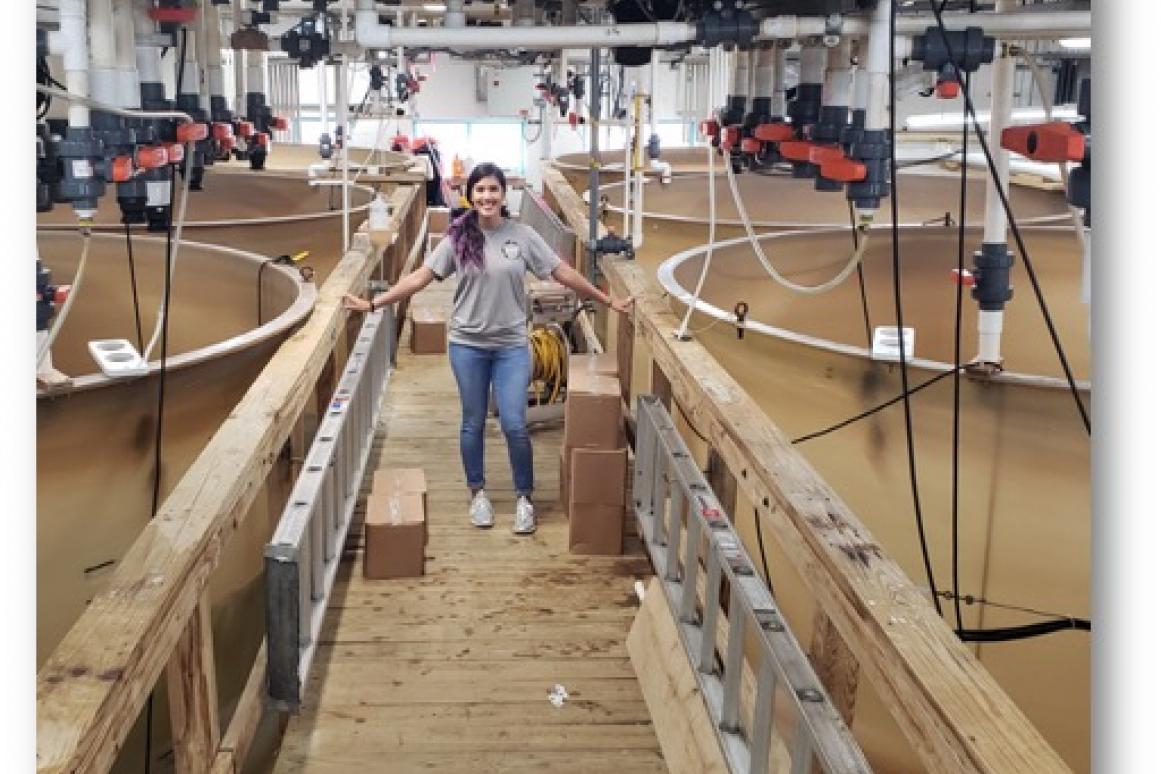HRI Student Meghan Martinez Spends Summer Working and Learning at NOAA HQ

CORPUS CHRISTI, Texas — HRI Coastal Conservation and Restoration Graduate Research Assistant Meghan Martinez recently returned from NOAA Headquarters in Silver Spring, Maryland, where she spent the summer immersed in the agency’s Office of Habitat Conservation’s Restoration Center learning about the Deepwater Horizon oil spill and the environmental impacts and restoration projects that are still ongoing today.
Martinez is a scholar in the NOAA Center for Coastal and Marine Ecosystems (CCME) program, which aims to educate and train a new generation of students in NOAA-related science, technology, engineering, math and social science disciplines, particularly those from underrepresented communities. As a part of that program, each student is hosted for a summer at a NOAA facility in what’s called a NOAA Experiential Research and Training Opportunity (NERTO), where they’re put to work on a real NOAA project and experience working in a government office. Dr. Eric Weissberger served as her program mentor.

Martinez spent the 12-week program learning about the 2010 Deepwater Horizon oil disaster as it pertained to natural resource injury and the current restoration efforts that are ongoing in the northern Gulf of Mexico. She inventoried information related to oyster monitoring programs and mapping and assessed data gaps in the Gulf of Mexico under the Deepwater Horizon Natural Resource Damage Assessment (NRDA). As a final product, Martinez produced decision making tools that would assist in the planning, implementation, and evaluation of oyster habitat restoration.
“This experience was beneficial in many ways to include the opportunity to build relationships and work alongside scientists and professionals in my field of research,” Martinez said. “My project required contacting state agencies for information and allowed me to network with resource managers, and become familiar with organizations/agencies that I could potentially be employed with one day. I attended weekly meetings at headquarters, and an annual Trustee Council public meeting in Pensacola, Florida where I met many of the Deepwater Horizon Restoration team from other Gulf states in person.”

Other travel experiences were also built into the NERTO, and Martinez traveled to Maryland and Virginia to learn about local oyster restoration project mapping and oyster aquaculture.
She visited an oyster restoration site in the Piankatank River July 8-10 for a field survey, where she learned about acoustic technologies and hydrography. Multibeam sonar was used to map seafloor structure and collect data specific to oyster restoration sites and habitat in a tributary of the Chesapeake Bay. She also visited the University of Maryland Center for Environment Science’s Horn Point Lab Oyster Hatchery in Cambridge, Maryland on July 11 for a tour, and learned about hatchery procedures, recent challenges in rearing oysters due to local water quality issues, and how the hatchery supports local oyster restoration efforts.
“The NERTO expanded my base knowledge for my field of research, and I learned about restoration efforts currently happening on a regional scale across the Gulf of Mexico,” Martinez said. “As my graduate career comes to an end, it is my hope that this experience will make me more marketable in a competitive workforce and I will get to apply everything I have learned in the next chapter.”
Martinez joined CCME in 2017 as a Texas A&M University-Corpus Christi marine biology master’s student working under the mentorship of HRI Coastal Conservation and Restoration Chair Dr. Jennifer Pollack.

